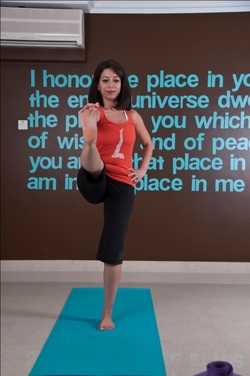 Namaste, Yoga, as soon as we hear this word, most of us immediately imagine a perfectly strong yet flexible young lady doing a really fancy pose by the beach. The literal translation of yoga, however, is union: bringing harmony to mind body and soul, uniting the will of man to the will of God, realisation that all beings are one and looking beyond the body/mind and onto what’s more constant, namely, the soul. Luckily for the average Joes Patanjali describes the tools and methods of achieving this equanimity that promises to bring peace and a fulfilling life. The yoga sutras give us a helping hand in describing five universal codes of conduct (aka Yamas). I will be taking you through a journey of discovering those Yamas, one at a time over the next few articles, in hopefully a practical way that moves from the gross to the subtle, from the obvious to the hidden and from the mundane to divine. The first of those Yamas is non-violence (Ahimsa). It seems like a simple concept; do not smash the face of the person who annoys you most. Whilst a lot of us might struggle with that alone (good luck with that!), there are so many levels and faces to violence and so many antidotes to it. Violence can be obvious through actions. Violence towards others it can mean causing physical, mental, emotional pain or discomfort. The more challenging aspect of non-violence is that towards oneself, which can mean deliberately making self destructive decisions, bad diets, staying in abusive relationships, judging oneself and criticising mistakes. Violence can also reveal itself through speech: the tone, use of words, pitch of voice and obviously, volume of voiceSri Sathya Sai Baba said: “Before you speak, think - Is it necessary? Is it true? Is it kind?” More subtle still, violence can come through inaudible speech: body language and even more importantly, thoughts and emotions. Think about all the violent things you tell yourself, all the harsh judgments you make about others. Do you push yourself too hard (maybe even on your yoga mat!), are your expectations of yourself too high, do you beat yourself up over failures that you could not have avoided? Angry feelings, frustrations, hatred, resentment are all other masks of violence. Patanjali argues that non-violence is not merely the absence of violence but is also cultivating the attributes that cannot exist with violence: compassion, kindness and unconditional love. He mentions that that who masters non-violence then influences a state of non-violence to all those around him/her. This reminds me of something Dadi Janki (one of the most renowned of the Brahma Kumaris said: “I don’t give suffering, and I don’t take suffering”. Not only has she decided against violence to others but she also made a conscious decision to separate her own inner peace from the actions of others. We all have a mini-Dadi Janki in our lives: someone you find impossible to be angry around, a grandparent maybe? A spiritual teacher? Whoever it is, can they inspire you enough to be that person too?
0 Comments
Leave a Reply. |
AuthorWeam is the founder of Namaste. She had started a very deep and intense spiritual journey at a young age having refused to continue to suffer with the common challenges of her generation: depression, anxiety and being lost. She insisted that there must be more to life than the constant rat race she was in Archives
January 2020
|

 RSS Feed
RSS Feed